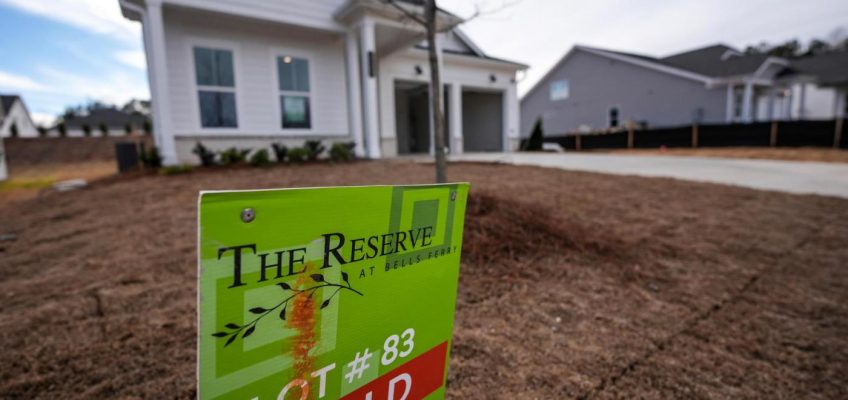By ALEX VEIGA, AP Business Writer
The average rate on a 30-year mortgage in the U.S. climbed this week to its highest level since mid-February, a setback for home shoppers that threatens to slow sales further this spring homebuying season.
Related Articles
April home sales slow with high mortgage rates, prices, putting chill into spring buying season
US spring homebuying season has its weakest start in five years
Average rate on a US 30-year mortgage rises to 6.81%, its highest level since late April
Average rate on a US 30-year mortgage holds steady at 6.76%, not far from highest levels this year
The number of new apartments is at a 50-year high, but states expect a slowdown
The rate increased to 6.86% from 6.81% last week, mortgage buyer Freddie Mac said Thursday. A year ago, the rate averaged 6.94%.
Borrowing costs on 15-year fixed-rate mortgages, popular with homeowners refinancing their home loans, also rose. The average rate ticked up to 6.01% from 5.92% last week. It’s down from 6.24% a year ago, Freddie Mac said.
Mortgage rates are influenced by several factors, including global demand for U.S. Treasurys, the Federal Reserve’s interest rate policy decisions and bond market investors’ expectations about the economy and inflation.
The average rate on a 30-year mortgage has remained relatively close to its high so far this year of just above 7%, which it set in mid-January. The average rate’s low point so far was five weeks ago, when it briefly dropped to 6.62%. It’s now at its highest level since Feb. 13, when it averaged 6.87%.
The elevated mortgage rates, which can add hundreds of dollars a month in costs for borrowers, have discouraged home shoppers, leading to a lackluster start to the spring homebuying season, even as the inventory of homes on the market is up sharply from last year. Sales of previously occupied U.S. homes fell last month to the slowest pace for the month of April going back to 2009.
The recent rise in mortgage rates reflects moves in the 10-year Treasury yield, which lenders use as a guide to pricing home loans.
The yield, which had mostly fallen this year after climbing to around 4.8% in mid-January, surged last month to 4.5% amid a sell-off of government bonds, triggered by investor anxiety over the Trump administration’s trade war.
The yield eased, then climbed above 4.5% last week after the U.S. and China agreed to a 90-day truce in their trade dispute. That raised expectations that the Federal Reserve won’t have to cut interest rates as deeply as expected this year in order to shield the economy from the damage of tariffs.
Long-term bond yields surged again this week after Moody’s lowered its credit rating for the U.S. over concerns about swelling federal government debt.
The 10-year Treasury yield was at 4.56% in midday trading Thursday after the House of Representatives approved a bill that would cut taxes and could add trillions of dollars to the U.S. debt.


Leave a Reply